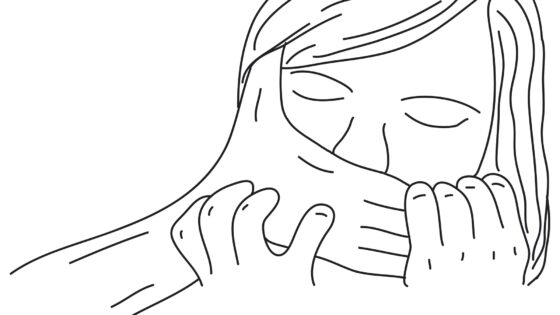Interview – Pat Ferris, specializes in treating victims of bullying and workplace harassment, trauma, and depression – Calgary, Alberta, Canada – by Laura Quiun – jupsin.com
- Pat has been a mental health professional since 1979. She has masters degrees in clinical social work and industrial organizational psychology and a Ph.D. in industrial organizational psychology.
- Pat’s professional mission is to develop psychologocally healthy workplaces and to run a business with integrity, respect, and cooperation with the consultants, companies, and strategic partners she works with.
- She specializes in treating victims of bullying and workplace harassment, trauma, and depression. Her companies, provide employee assistance programs, wellness intiatives (especially stress), disability management, leadership development, and counselling to corporations and individuals.
- Pat has been a speaker at numerous international conferences on the topics of stress and cardiovascular health, bullying, and workplace conflict.

«Workplace bullying can be direct such as verbal abuse and exclusion or indirect such as gossip, rumors and put downs»

Workplace bullying is more an organizational problem than an individual problem. When a culture permits bullying behavior, a toxic culture emerges.
Laura Quiun. What makes you begin working and researching in workplace bullying?
Pat Ferris. In the mid 1990s, working within the Employee Assistance Program Industry I would receive clients who told me horrendous stories about their experiences in their workplaces describing physical assault, verbal abuse, exclusion, use of the performance management system to fire them, cruel treatment, and sexual abuse.
Few organizations took active steps to help with the situation
I would suggest they ask their supervisors, managers or Human Resources for support.
What I discovered is that these clients were told that the behavior they had experienced was OK, or that they were cause of the problem.
Few organizations took active steps to help with the situation. I began to study in this area to understand this phenomena. I have now been providing treatment, consulting to organizations, coaching managers and providing facilitation for almost 25 years.
LQ. Could you give us your definition of workplace bullying? We also make this question to Marie-France Hirigoyen and Laura Crawshaw.
Workplace bullying can be direct such as verbal abuse and exclusion or indirect such as gossip, rumors and put downs
PF. Workplace bullying is persistent non physical behavior, not covered by protected grounds, that is known to hurt human beings.
It can be direct such as verbal abuse and exclusion or indirect such as gossip, rumors and put downs or through cyber means.
Bullying may be targeted at one or more individual by one or more individuals. I do not consider intent nor do I see a time frame of 6 months as needed.
If we use the most stringent of research definitions, people will be badly injured by the time they can allege workplace bullying.

Our language does not do justice to the target experiences and we still have much work to do in understanding effective interventions with actors.
LQ. Which are the fundamental aspects of your work on workplace bullying?
PF. There are several fundamental aspects to my work. In training, the most fundamental aspect is social dialogue that occurs in a face to face setting. I believe all supervisors, managers and senior manager have a due diligence to understand the concepts and interventions that are effective in stopping bullying behaviors early.
The most fundamental aspect of my work in treating targets of workplace bullying is establishing a trusting therapeutic relationship where the client feels safe and validated
I find that confronting and dealing with workplace bullying is difficult for the individuals charged with managing it.
Our language does not do justice to the target experiences and we still have much work to do in understanding effective interventions with actors.
The most fundamental aspect of my work in treating targets of workplace bullying is establishing a trusting therapeutic relationship where the client feels safe and validated.
It is through this relationship that healing the moral would of distrust can begin to heal. Building that relationship takes time and compassionate listening, education and support.
Only then can I proceed with the real relationship that facilitates health promoting thinking, feeling, and behavior. Of all the types of clients I see, this beginning of listening, validating, supporting and building trust is the most essential and the core of healing.

LQ. ¿Could you explain to our readers the classification of the organisations you do considering the degree of predisposition to make visible and act against workplace bullying?
PF. In my 2004 paper based on my then 10 years of experience helping clients ask their organizations for support, I identified three main types of responses to allegations of workplace bullying:
- The behavior is OK, this is how we are in this organization. Leave if you can’t take it. I still see these organizations out there.
Many of my clients have been told their personality is the issue and they should seek counselling to change it
- The second type has policies and mision statements that employees are important. However, they frequently don’t act well on reports and will stonewall and blame the victim.
Many of my clients have been told their personality is the issue and they should seek counselling to change it. These days, I am finding large hierarchical organizations can act in this way. It is the most harmful type of organization because people believe they are safe at work due to policies and misión statements, they believe their issues will be dealt with procedural justice.
When this doesn’t happen, this is experienced as organizational betrayal and a moral injury results. This type of injury is a second layer to the injury sustained by exposure to workplace bullying and can be very hard to treat.

The topic of respect is kept alive by initiatives and dialogues, people are selected and promoted based on emotional and social intelligence and respect is modelled throughout the organization
- The third organization takes the issues seriously. Employees, supervisors and managers are well trained in identifying and intervening in negative behavior.
There are supports and resources to help people behavior appropriately at work and to help those who have experienced harm.
These organizations will work with actors to assist them to achieve competence however if an actor will not change, they will severe the employment relationship.
The topic of respect is kept alive by initiatives and dialogues, people are selected and promoted based on emotional and social intelligence and respect is modelled throughout the organization.
LQ. Without enter in value the absence of ethics of workplace bullies… Could we say that we are behind a collision of two worlds with different values system? or behind a conflict of two groups that want to make their truth prevail as one?
PF. I believe that workplace bullying often is about power. There are people who do not share power well and see it as a zero sum game and there are those who are willing to collaborate.
I believe that workplace bullying often is about power
When an organizational culture makes competition and conformity its main values, workplace bullying will emerge. I find people that are conscientious, competent, politically unaware and who have strong belief in a just world seem to be targeted.
They also will make every effort to fit in and conform and don’t realize the damage and negative dynamics until they have lost power. Bullying can certainly arise from escalated conflict but I find that is dealt with more readily that predatory/reactionary bullying.

Pat Ferris, specializes in treating victims of bullying and workplace harassment, trauma, and depression.
LQ. What could you suggest to those enterprises that had implemented workplace prevention policies against bullying and they did not know why they do that? Which is the risk they face acting this way? What would allow an effective intervention?
PF. Organizations who implement policies just because they are legislated do not have a true investment in understanding and spending the resources that they need to support a policy.
A policy that is not enacted with training, meaning, and support will not be effective and the organization will likely fail when they need to implement it. A policy should be a ‘living document.’ That is it is discussed, revised, people have input and everyone is trained on the concepts within it.

LQ. Is there any direct relation between the extent of the degree of company’s involvement in these events and the impact of aggression? Could you explain these to our readers this process?
PF. Workplace bullying is more an organizational problem than an individual problem. When a culture permits bullying behavior, a toxic culture emerges.
When a culture permits bullying behavior, a toxic culture emerges
If a Company does not provide a range of interventions and discussions with employees, culture of respect cannot be transmitted.
Interventions should be available through preventive activities such as policy development with input from all levels of organizations, training, group development of a shared commitment to a culture of respect; monitoring of culture through surveys, exit interviews, sick leave data, third party confidential reporting lines, etc.; proper investigations and proper use of mediation, facilitation; and last resources for repair such a coaching, counselling, and team interventions.
LQ. What advice would you give to psychotherapists that work with victims?. Could you suggest any tool or questionnaire to assess the impact of the aggression? Any protocol of action?
PF. The most critical ability in treating targets of workplace bullying is the ability to connect with warmth and compassion; to assist with understanding their experiences and to help targets calm their sympathetic nervous system.
The strenght of the therapeutic relationship and the trust that builds is the most critical component of treatment.
I use the Psychiatric Diagnostic Screening Questionnaire to assess symptoms across a wide variety of disorders.
I use the Psychiatric Diagnostic Screening Questionnaire to assess symptoms across a wide variety of disorders
With any inventories a therapist uses, there must be recognition that clients will likely score high on paranoia. In general, they are not experiencing paranoia but someone truly was out to harm them.
The general protocols I follow includes, connecting (building trust, educating on why they were targetted, and ‘holding’ them – being with them through their emotions); then I work on teaching skills (tailored to each person) to calm the sympathetic nervous system such as visualization, affirmation, mediation, hypnosis, art.
Then other therapies such as Acceptance and Commitment Therapy, Narrative Therapy, Cognitive Behavioral Therapy or others may be used base on clinical presentation. I find a therapist needs a mix of most of these therapies to adequately address healing.
In later stages I focus on growth and learning (The Post Traumatic Growth Inventory can be helpful with examining learning). Finally, when stability has been achieved I suggest periodic check ins.

The most critical ability in treating targets of workplace bullying is the ability to connect with warmth and compassion; to assist with understanding their experiences and to help targets calm their sympathetic nervous system.
LQ. Do you considered important that people that work with victims had a specific training , for which professionals this is a must do?
PF. Yes, I believe that targets present with issues that are particular to the experience of workplace bullying.
Yes, I believe that targets present with issues that are particular to the experience of workplace bullying
Over decades of working with my colleagues in the International Association on Workplace Bullying and Harassment Therapist Special Interest Group, that we agree that the therapeutic relationship is so critical yet can be so fragile in the beginning that therapists need to understand techniques for developing this stage.
Rumination, transference and counter transference are very common and require understanding in this population. Finally, therapists may under estimate the compassion fatigue and drain that can result from treating too many bullied clients at once.
LQ. Recently you had work experience in Israel, could you tell our readers more about this master class?
Workpalce bullying is an organizational culture issue that can only be truly addressed from a top down, bottom up commitment
PF. The Master Class focused on the dark side of organizations. I presented my insights to working with companies.
While we have progressed in understanding the concepts and injury around workplace bullying, we still need much more work on organizational interventions.
The discussion from all focused around the need for early intervention in behaviors before they reach the level of workplace bullying.
We also discussed the need to tools to help identify workplace bullying e.g., surveys, interactive feedback in real time, and the use of AI to identify themes through emails. Workpalce bullying is an organizational culture issue that can only be truly addressed from a top down, bottom up commitment.

Climate change? – No, workplace harassment – by Idígoras y Pachi – Exclusive at jupsin.com
LQ. Considering this experience, in which sense the culture of origin affects the actions prone to be considered workplace bullying, with coping strategies?
PF. A respectful Workplace culture and senior management commitment are vital to reducing the incidence or bullying behaviors. The level of legislation in a country or jurisdiction will be important in setting standards for companies to follow, however, companies must fully implement a full range of initiatives to achieve success.
Many advocacy groups are producing manuals that present full information on how to implement a Respect in the Workplace Management System
Many advocacy groups are producing manuals that present full information on how to implement a Respect in the Workplace Management System.
These initiatives are helping even small companies make the commitment to respect.
LQ. jupsin.com is a portal dedicated to sensibilization and make visible harassment in all its facets, what advice would you give?
PF. I believe that organizations and the people tasked with managing respect in the workplace need clearly identified steps to take, examples of policies and procedures, forms, reporting, and ideas about effective interventions.
Providing models, links to resources, and informative articles about specific interventions such as training, dialogues, reporting forms and responses, outcomes of legal cases will educate and inform readers.
Workplace bullying is being taken seriously in most countries. It is an important time to provide rich sources of information
Information should also be available to targets about important aspects of treatment and to actors who may need to understand their own behavior.
LQ. Would you like to add anything else that you consider necessary to tell our readers?
PF. Workplace bullying is being taken seriously in most countries. It is an important time to provide rich sources of information.












